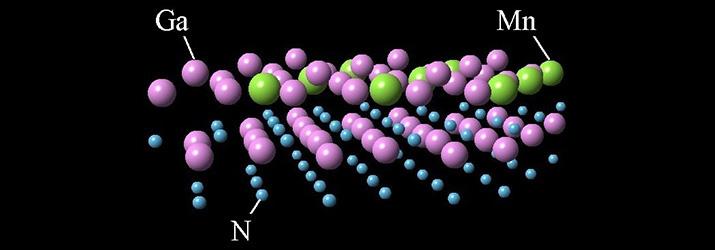

Nano-Machines, Quantum Dots and More
The nano-scale, at a billionth of a meter, is the size-scale of atoms. At this scale, the world obeys the laws of quantum mechanics, where particles behave like waves and waves appear as particles. In this nano-world, we can predict the properties of semiconductors, used inside computer chips, and build new nano-machines made up of just a few atoms. We use this information to build new devices such as quantum computers and learn about how a property of the electron called spin interacts between nano-scale regions called quantum dots. These topic and others are open to directed research projects by both undergraduate and graduate students.
Faculty
Dr. Horacio Castillo : Theoretical Condensed Matter
Dr. Gang Chen : Experimental Condensed Matter, Disordered Materials
Dr. David Drabold : Theoretical Condensed Matter, Computational Methodology
Dr. Alexander Govorov : Theoretical Studies of Nanoscale Phenomena
Dr. Saw-Wai Hla : Experimental Nanophysics
Dr. David Ingram : Atomic Collisions in Solids, Thin Film Deposition and Analysis
Dr. Martin Kordesch : Surface Physics
Dr. Nancy Sandler : Theoretical Condensed Matter
Dr. Arthur Smith : Experimental Condensed Matter and Surface Physics
Dr. Eric Stinaff : Experimental Condensed Matter and Spectroscopy of Nanostructures
Dr. Sergio Ulloa : Theoretical Condensed Matter and Quantum Dots
